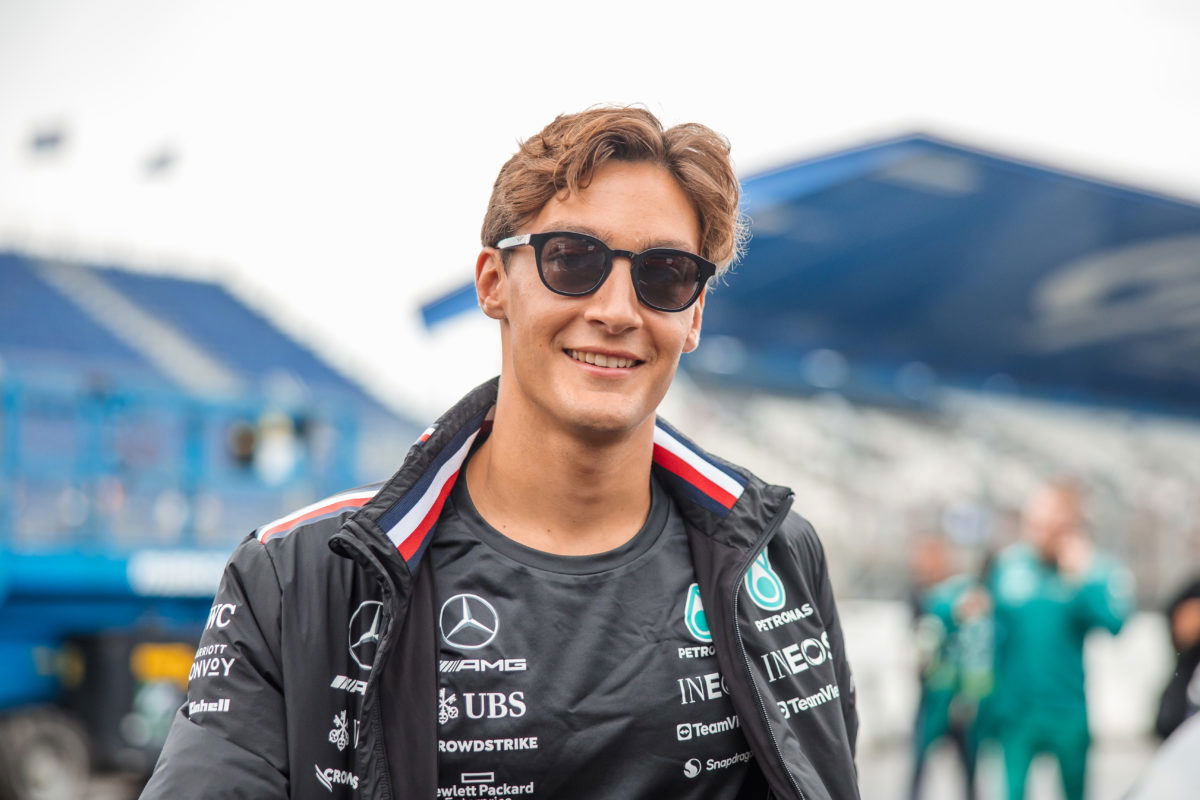

George Russell claims he has finally rediscovered his mojo in F1 following a lean period for the Mercedes driver.
After finishing third in the Spanish Grand Prix after Mercedes changed development direction and introduced a major upgrade to the car, Russell then struggled, notably in qualifying which, in turn, compromised his result on Sunday.
The British driver has cited a wrong turn with set-up, with a focus on the race rather than over one lap, as the root cause of his issues, which ultimately undermined his confidence.
An adjustment ahead of qualifying for last weekend’s Dutch GP reaped rewards, with Russell qualifying third, which put a smile back on his face, even if the race failed to yield the rewards his upturn in morale warranted.
“The loss of performance, in my head at least, has maybe been through a loss of confidence, which sort of go hand in hand,” said Russell.
“I definitely took a step back in qualifying performance but if anything, my race pace has been as strong as ever, and one of my strengths this season.
“It’s something I’m really pleased about because the qualifying pace, if anything, is the the most straightforward part. It’s just sort of balls to the wall, drive as fast as you can over one lap.
“But definitely, what I think we’ve concluded, is that we’ve been going in the wrong set-up direction, at least on my side, in the recent few races, and that’s been compromising my confidence and my qualifying performance, and we’ve perhaps put too much emphasis on the race.
“Now that the grid is so compact, in the past if you are one- or two-tenths off in qualifying, it may have been one grid position. Now it’s five or six.
“It’s been a number of these factors that have just hindered me on a Saturday, but that’s why I was so happy with Zandvoort because we changed the approach, put full focus on the qualifying, and I’ve regained my confidence.
“After five laps back in the car, I felt like I’d got my mojo back.”
Asked by Speedcafe why it took so long to make the adjustment, and whether he could carry the directional change forward into other circuits, despite the variable nature of the tracks, he replied: “It’s a very good question and something we ask ourselves.
“With this generation of cars, you’re always looking for that best trade-off.
“Most cars are at their maximum downforce, really low to the floor, you’ve got to run the car quite stiff and aggressive, which always comes at the expense of the ride and the compliance of the car.
“Vice versa if you want a nice soft car that might give you a bit more driveability over the kerbs, then it’s going to come at the expense of downforce, and we’ve just been chasing one direction, thinking that would pay off, and it hasn’t.
“There are no guarantees we’ve solved it but I think we’ve got a clearer idea how to react.
“And you know, Formula 1 is such a fluid sport, we’ve gone from Zandvoort, a high-downforce circuit with the three hardest compounds of tyres, and now we’re in Monza on the lowest downforce with the three softest compounds of tyres.
“You’ve got to be quick to adapt, to learn, and so now we’re just approaching things slightly differently.
“We’ve not reinvented the wheel but I feel like we’re on the right path, and that’s the way with the majority of things – if you believe it, then you can achieve it, and right now I believe it, so that’s a good thing.”





















Discussion about this post